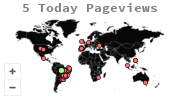ÂNCORAS DE CARREIRA: UMA QUESTÃO DE GÊNERO?
DOI:
https://doi.org/10.20946/rad.v10i2.2713Abstract
A diferença entre homens e mulheres no mercado de trabalho é cada vez menos evidente. Entender se os fatores que norteiam as decisões de carreira dos indivíduos do sexo masculino são os mesmos que influenciam as decisões femininas pode ser fundamental para que as empresas estruturem suas políticas de recursos humanos de maneira adequada e para que os indivíduos possam planejar suas carreiras com maiores probabilidades de sucesso. Este estudo analisa como o gênero influencia as escolhas de carreira por meio de uma análise quantitativa que compara as âncoras de carreira de 54 homens e 50 mulheres, todos alunos do último ano do curso superior de administração. Os resultados do estudo apontam para uma diferença significativa entre os sexos, no que diz respeito à âncora de carreira predominante. Todavia, há indícios de que as âncoras menos presentes, ou seja, as competências, motivos e valores que menos se destacam no grupo pesquisado, são semelhantes entre homens e mulheres.Metrics
Downloads
Published
How to Cite
Issue
Section
License
Authors who publish in this journal agree to the following terms:
1. Authors retain the copyright and grant the journal the right of first publication, with the work licensed simultaneously under a Creative Commons Attribution License after publication, allowing the sharing of work with acknowledgment of the authorship of the work and initial publication in this journal.
2. Authors are authorized to take additional contracts separately, for non-exclusive distribution of the version of the work published in this journal (eg publish in institutional repository or as a book chapter), with acknowledgment of authorship and initial publication in this journal.
3. Authors are allowed and encouraged to publish and distribute their work online (eg in institutional repositories or on their personal page) at any point before or during the editorial process, as this can generate productive changes, as well as increase the and the citation of the published work (See The Effect of Free Access).








